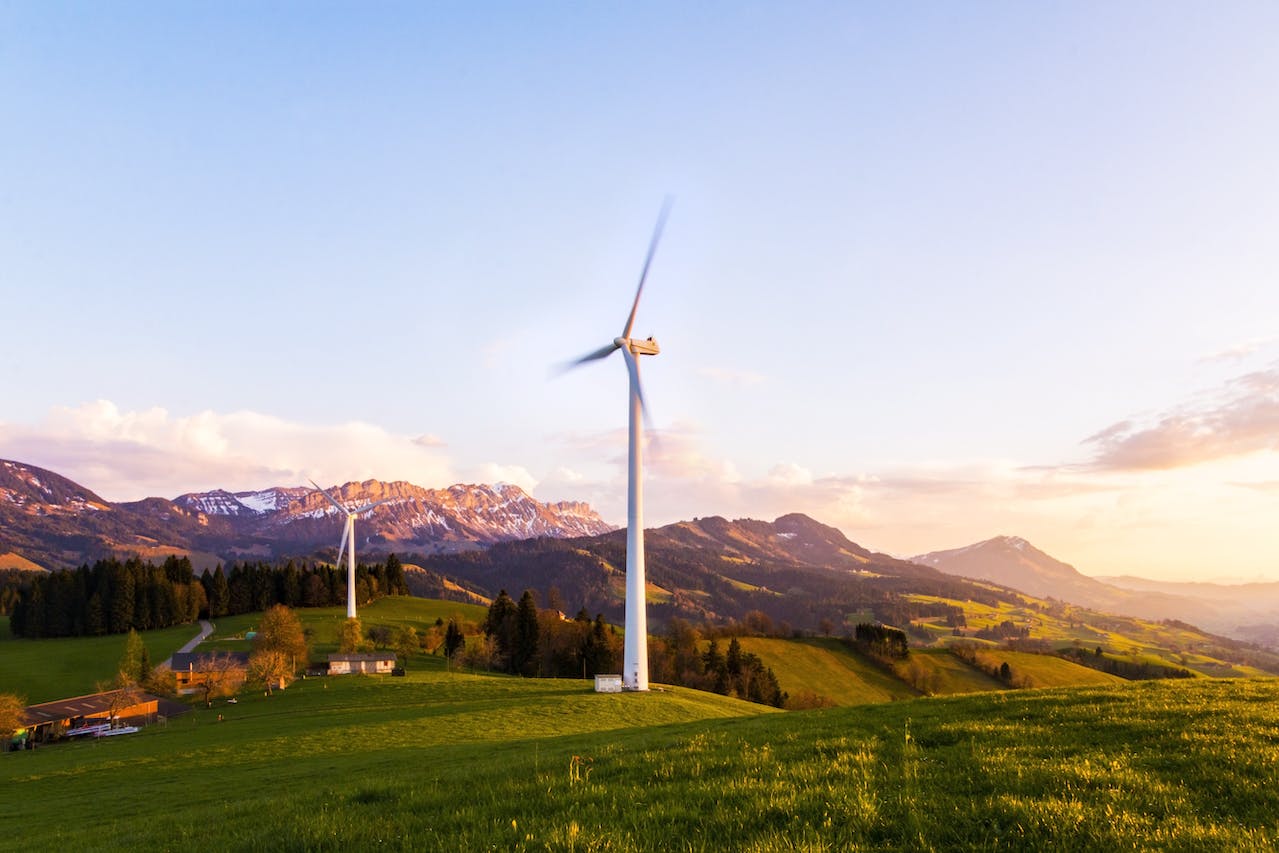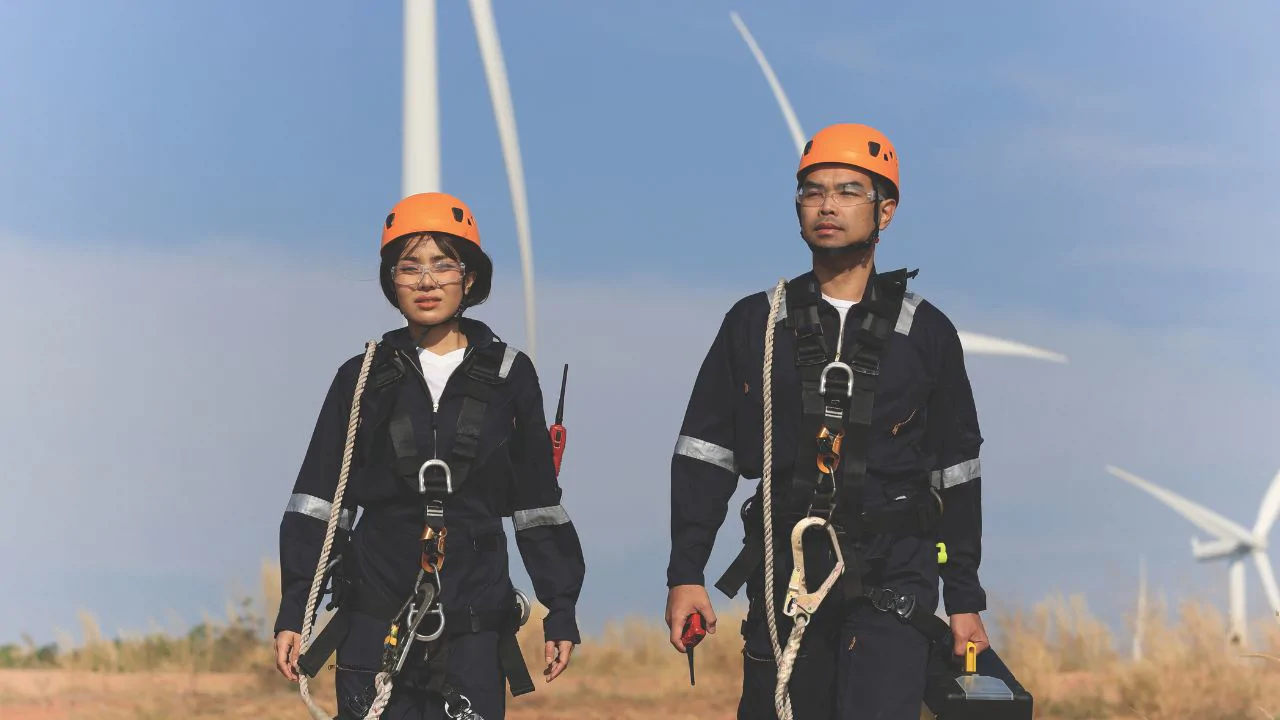How the Inflation Reduction Act is Impacting Renewable Energy
17 Nov, 20238 minIn an era where the urgency of addressing climate change has become paramount, the Inflation...

In an era where the urgency of addressing climate change has become paramount, the Inflation Reduction Act of 2022 (IRA) is helping the US push forward with the energy transition. Enacted by President Biden on August 16th, 2022, this legislation represents a groundbreaking commitment to combatting inflation while propelling the nation into a greener and more sustainable future.
With a monumental investment of nearly $400 billion, the US Inflation Reduction Act stands as a cornerstone in the landscape of climate legislation, particularly in its profound impact on renewable energy.
This guide delves into what the Inflation Reduction Act is and its transformative impact on the renewable energy sector. From pioneering an extensive array of clean energy projects to fostering job growth, supporting low-income communities, and reducing energy costs, we will explore how the act is a catalyst for change and is shaping the trajectory of renewable energy in the US market.
In this guide, we’ll explore:
- What is the Inflation Reduction Act?
- The impact of the Inflation Reduction Act on renewable energy
- Pioneering the future of renewable energy projects
- Increasing renewable energy jobs
- Boosting low-income communities
- Reducing energy costs
What is the Inflation Reduction Act?
The Inflation Reduction Act of 2022 was brought to fruition by US President Biden on August 16th 2022 and involves $500 billion of new tax breaks and spending to support the renewable energy transition and lowering health costs. Of the investment, nearly $400 billion of federal funding has been dedicated to bolster clean energy advancements across the US.
Overall, the investment makes the Inflation Reduction Act the most significant climate legislation in US history. It will bring with it new clean energy projects and renewable energy jobs while supporting future efforts against climate change and boosting low-income communities.
Despite its relevant infancy, the Inflation Reduction Act is already stated to support 272 renewable energy projects, which is expected to total $278 billion of new investment. Of course, with these projects comes the need for talent. Therefore, it’s estimated that the act will provide more than 170,000 renewable energy jobs.
The act is here to truly shape the future of the renewables landscape in the US while enhancing innovation, industrial growth and economic competitiveness. Forecasts by Goldman Sachs predict that the subsidies from the Inflation Induction Act could reach $1.2 trillion by 2032 and bring $3 trillion into renewable energy technology innovations.
With the apparent growth of new clean energy projects and job opportunities sweeping the US market to support net-zero targets and local communities, the Inflation Reduction Act is a massive leap for the US and could see the nation become increasingly competitive within the renewables space.
Now that we’ve outlined what the Inflation Reduction Act of 2022 is, let’s delve further into how it’s impacting renewable energy.
The impact of the Inflation Reduction Act on renewable energy
There are several ways the Inflation Reduction Act is impacting renewable energy in the US market, from pioneering the future of renewable energy projects with 272 clean energy projects, and spurring an increase of over 170,000 renewable energy jobs, to boosting low-income communities and reducing energy costs across the country. In this section, we will explore each of these points as we look at how the Inflation Reduction Act is impacting renewable energy.
Pioneering the future of renewable energy projects
As we’ve emphasized, the Inflation Reduction Act of 2022 has already announced the development of at least 272 renewable energy projects accompanied by $278 billion of new investment. These clean energy projects are stated to cover various industries within the renewables space, from solar, wind, battery storage and electric vehicle manufacturing facilities.
Here is a breakdown of the known projects by industry:
- 91 battery projects
- 65 new or expanded electric vehicle projects
- 56 solar projects
- 29 wind projects
- 25 new clean tech projects
- 13 grid and transmission projects
- 12 hydrogen projects
Source: Climate Power
These projects, among others that stem from the Inflation Reduction Act, will cover at least 44 US states. As for where these projects are located or are planning on being located, Climate Power produced a list of the top 10 states that will be home to the majority of the renewable energy projects under the act.
- Michigan - 24 projects
- Georgia - 22 projects
- South Carolina - 20 projects
- California - 16 projects
- Texas - 14 projects
- Tennessee - 13 projects
- Arizona - 13 projects
- New York - 12 projects
- Ohio - 12 projects
- North Carolina - 9 projects
The Inflation Reduction Act of 2022 has birthed a whole plethora of clean energy project proposals from traditional energy organizations in the US and further afield. Many of these companies are still awaiting credits from the act, which could see the number of projects rise even higher.
You can read more about one of the major energy companies awaiting credits from the Inflation Reduction Act by reading our Client Showcase on Velocys - the innovators piloting the future of sustainable aviation fuel technology.
Increasing renewable energy jobs
Another impact the Inflation Reduction Act has on the US renewables market is the number of job opportunities it provides. The act is said to have already created 170,600 renewable energy jobs, a figure expected to increase over the coming years.
BlueGreen Alliance states that 9 million renewable energy jobs will be created over the next decade, with 1 million roles created each year for the next ten years. With the influx of opportunities, talent within the renewables space and alternative energy industries are beginning to see the prospect of moving into renewables to support the future of their careers and the energy transition.
The millions of jobs proposed by BlueGreen Alliance cover the following areas:
- Clean energy
- Energy-efficient buildings
- Clean manufacturing
- Natural infrastructure
- Clean transportation
- Environmental justice
As mentioned by Climate Power, other renewable jobs will also likely be found in areas such as:
- Battery storage
- Electric vehicle manufacturing
- Solar
- Wind
- Hydrogen
- Other clean energy jobs
Discover more on this topic by reading our guide on The Rise of Renewable Jobs Under the Inflation Reduction Act. Here, we delve into the areas where renewable jobs are present under the act and the challenge of finding the talent to fill these jobs in renewables.
Boosting low-income communities
The Inflation Reduction Act Low-Income Communities Bonus Credit is also a powerful tool in boosting low-income communities across the US. With the IRA's place-based incentives offering substantial benefits to companies who place their renewable energy projects in disadvantaged regions, this strategic approach can advance environmental goals while promoting equity and economic growth within economically disadvantaged areas.
Regarding place-based incentives, companies can receive up to a 20% boost to the Investment Tax Credit for qualified solar or wind facilities in communities where wages, employment, and college graduation rates are low. Additionally, to receive the added credits, taxpayers must hire a proportion of apprentices and pay workers the local average wage.
The first day of a 30-day application window for the Low-Income Communities Bonus Credit saw 725 applicants from across the country apply for the US Inflation Reduction Act Low-Income Communities Bonus Credit - projects that would equate to roughly 170 MW capacity.
Although time will tell whether the place-based incentives will have an impact on low-income communities, as much of the allocation has not been awarded yet, the bulk of known investments appear in counties with lower college graduation rates, higher poverty rates, above-average child poverty rates, and below-average employment-population ratios.
Statistics signify how the Inflation Reduction Act is boosting low-income communities:
- 90% of renewable energy projects are located in counties with below-average weekly wages
- 80% of Inflation Reduction Act investments occur in counties with college graduation rates that are lower than the national average
- 65% of already announced investments occur in counties where the population of employment is lower-than-normal
- 65% of already announced investments occur in counties where poverty rates are above average
Source: US Department of the Treasury
By focusing on low-income areas with economic challenges, lower education rates, and higher poverty levels, investments into clean energy projects by the Inflation Reduction Act can create employment and economic opportunities for underserved communities while contributing to a more productive and sustainable future for the nation.
Reducing energy costs
Following on from our previous point, the tax incentives brought on by the Inflation Reduction Act are also striving to help benefit all American citizens by reducing the cost of energy while simultaneously supporting climate efforts.
The Department of Energy predicts the combination of the Inflation Reduction Act and Bipartisan Infrastructure Law - the most significant federal investment in the history of US public transportation - will lower electricity rates by up to 9% and reduce gas prices by up to 13%. These projections are estimated to occur by 2030 to save close to $38 billion on electricity bills for American families while lowering US net greenhouse emissions to 40% below 2005 levels.
Mckinsey also revealed how close to $43 billion in Inflation Reduction Act tax credits aim to reduce emissions by making rooftop solar panels, electric vehicles, geothermal heating and energy-efficient appliances more affordable. Beginning in 2023, Americans who drive qualifying clean vehicles will earn tax credits of up to $7,500.
Below is a breakdown of these consumer incentive tax credits:
- $7,500 tax credits for driving new, clean vehicles
- $4,000 tax credits for driving used clean vehicles
- $2,000 tax credits per year for installing energy-efficient heating appliances
- $30 tax credits per MWh for zero generation of carbon electricity
- $15 tax credits per MWh for using power produced by a qualifying nuclear facility
- $3 tax credits per kg for the production of qualified clean hydrogen
- $1.75 tax credits per gallon of the production or mixture of sustainable aviation fuel
Source: Mckinsey
These tax incentives from the Inflation Reduction Act of 2022 could encourage US citizens to live greener while supporting the planet's sustainability for future generations.
Final thoughts on the Inflation Reduction Act of 2022
The Inflation Reduction Act of 2022 emerges as a transformative force in shaping the future of renewable energy in the US. With an unprecedented c.$400 billion investment, it stands as the most significant climate legislation in the nation's history. The act pioneers the development of over 272 renewable energy projects, creating a diverse landscape spanning battery storage, electric vehicles, solar, wind, and more.
Beyond technological advancements, its impact resonates in the job market, generating over 170,000 renewable energy jobs and fostering a promising outlook for talent and future talent in the sector.
Additionally, the act's deliberate focus on low-income communities through the Low-Income Communities Bonus Credit demonstrates a commitment to equity and economic growth. By incentivizing renewable energy projects in economically disadvantaged areas, it not only addresses environmental goals but also stimulates employment and economic opportunities.
Furthermore, the tax incentives of the US Inflation Reduction Act contribute to the reduction of energy costs, benefiting all Americans while supporting broader climate efforts.
The Inflation Reduction Act brings many potential benefits and positions the US as a competitive force in renewables as we move forward. With projections hinting at substantial future investments and a positive impact on the economy and the environment, the act signifies a monumental leap towards a sustainable and resilient future for the nation.
We've got our finger on the pulse when it comes to talent acquisition in the era of the Inflation Reduction Act and understand that hiring challenges lie ahead. Thankfully, we have the solutions to help you navigate these obstacles.
Discover more about how we’re supporting businesses to achieve their recruitment goals by downloading our guide on Navigating the Inflation Reduction Act Talent Storm.
Looking to build your renewable energy talent roster?
With a wealth of collective expertise exceeding 90 years, we focus on linking the globe's most cutting-edge organizations with the top-tier talent available in the market. Our consultants excel in providing unparalleled talent acquisition services, offering comprehensive solutions ranging from contract-based engagements to permanent (direct) hires. We aim to empower your upcoming energy projects, enabling you to fully leverage the benefits of clean energy in the era of the Inflation Reduction Act.
If you’re seeking a recruitment partner to support your Inflation Reduction Act-related renewable energy projects, contact NES Fircroft today.









